The Frostbitten Convention: How the UP Became Part of Michigan
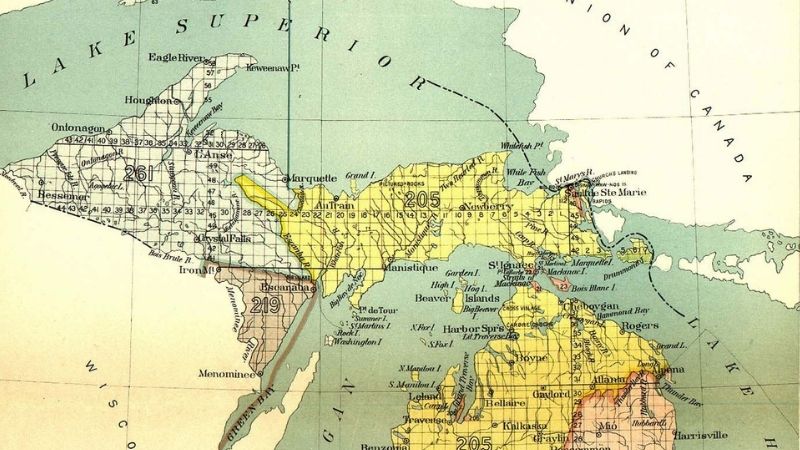
This image at the bottom of this post is one of the last copies in existence of the “Proceedings of the Second Convention to Assent,” an event most commonly known as the “Frostbitten Convention.”
It was at this convention that the Michigan Territory officially accepted the terms of the United States Congress in the settlement of the border dispute with Ohio and ultimately led to the Upper Peninsula becoming part of the new State of Michigan.
This copy is in the collection of the Library of Michigan in Lansing, and was on display in the Beaumier U.P. Heritage Center’s exhibition, “The 51st State?” from October 2019 to March 2020.
In 1836, the State of Ohio and Michigan Territory would be locked in a war of words (and occasional violence) over the ownership of the “Toledo Strip.” Inevitably, this dispute ended up in the U.S. Congress, where most representatives and senators favored Michigan’s claims.
However, President Andrew Jackson was concerned that if they gave the Toledo Strip to Michigan, his hand-picked successor Martin Van Buren would lose Ohio’s 21 electoral votes in November’s presidential election. Jackson decided that the “strip” should go to Ohio.
As a compromise, the congressional committee on Michigan’s statehood proposed that it should get the Upper Peninsula as a benefit of renouncing its claims to the Toledo Strip.
One might think that such a compromise would make Michiganders happy, but for the most part it did not. In part, because they resented having such conditions placed on their inevitable statehood but also because they believed the Toledo Strip far more valuable than the Upper Peninsula.
At the time, the U.P. was viewed as an isolated wilderness devoid of any financial prospects and full of nothing but “fur traders and Indians.”
The governor of the Michigan Territory was the 24-year-old, Stevens T. Mason, who during the “Toledo War” had been a staunch fighter for retaining the Toledo Strip. However, by September of 1836, he had come to realize that it was now lost to political expediency (he like Jackson and Van Buren was a Democrat).
He also knew that Michigan stood to gain $400,000 from the federal government in surplus funds if it became a state by January 1837. He called for a “Convention to Assent” to the terms of the U.S. Congress in Michigan’s petition for statehood.
On September 26, 1836, 49 delegates from across the Michigan Territory met at the Washtenaw County Courthouse in Ann Arbor for the First Convention of Assent. The two main political parties in Michigan were the Democrats and the Whigs, with the Democrats having the most political power.
The Whigs were very much against the statehood terms where many Democrats were excited about inclusion of the Upper Peninsula and putting the border dispute behind them. However, after four days of debate, the Nays had it by a margin of 28-21, putting statehood on hold.
Where the Whigs and some Democrats celebrated their defiance of the U.S. Congress, Governor Stevens T. Mason and sympathetic Democratic politicians took charge of the issue and created county conventions to nominate new delegates for a Second Convention of Assent.
This time, very few Whigs were named to the convention, either because they refused to take part or because they were deliberately not selected.
The Second Convention was held again at the Washtenaw County Court House on a very cold December 14, 1836. Due to almost no presence of the Whig party at the Convention, the measure passed with 78 of the 88 delegates signing a resolution accepting Congresses’ terms.
The resolution stated, “…it was better to be humiliated and to secure the civil and religious liberties inherent in statehood than to engage in an idle, unprofitable and hopeless contest for a boundary which is assuredly and forever lost to us.”
News that the convention accepted the terms of the dispute was not celebrated by the Whigs or many Michiganders. The Second Convention to Assent would earn the nickname the “Frostbitten Convention” due to the cold temperatures, but also because of the cold reception it received from many of the territory’s citizens.
Regardless, in January 1837, the U.S. Congress received the resolution from Michigan and by the end of the month, it became the 26th state in the union.

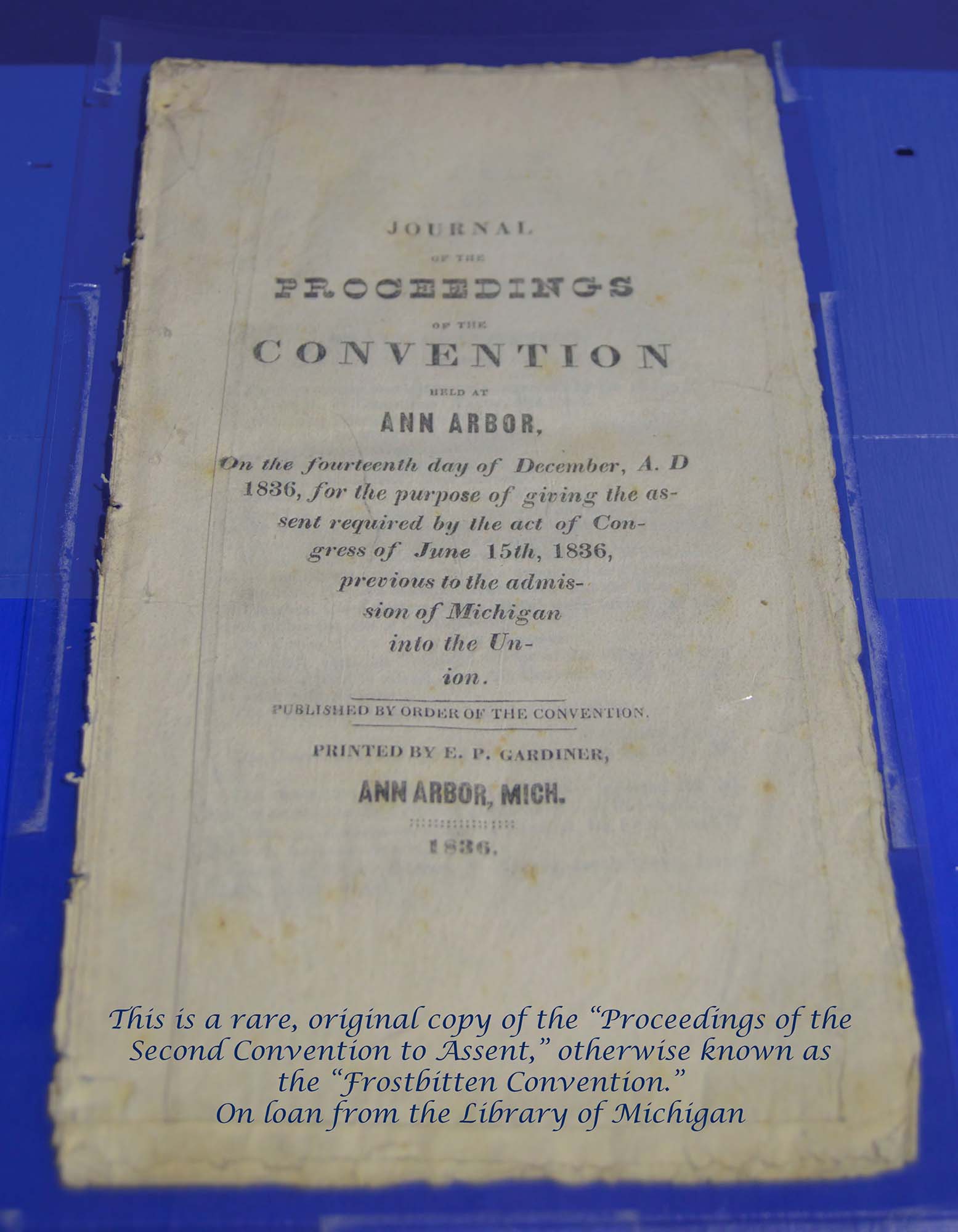

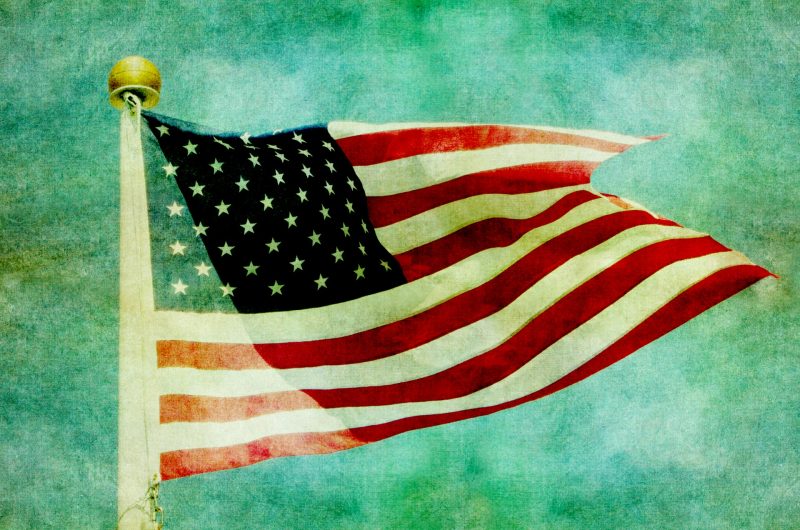
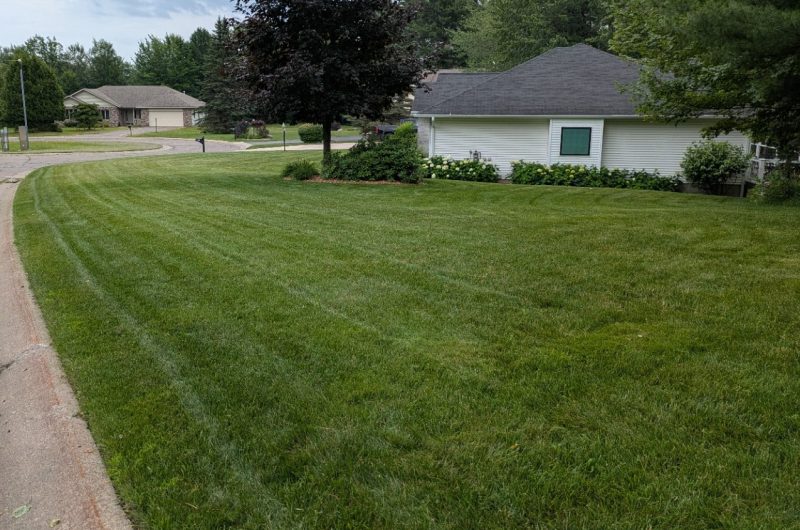
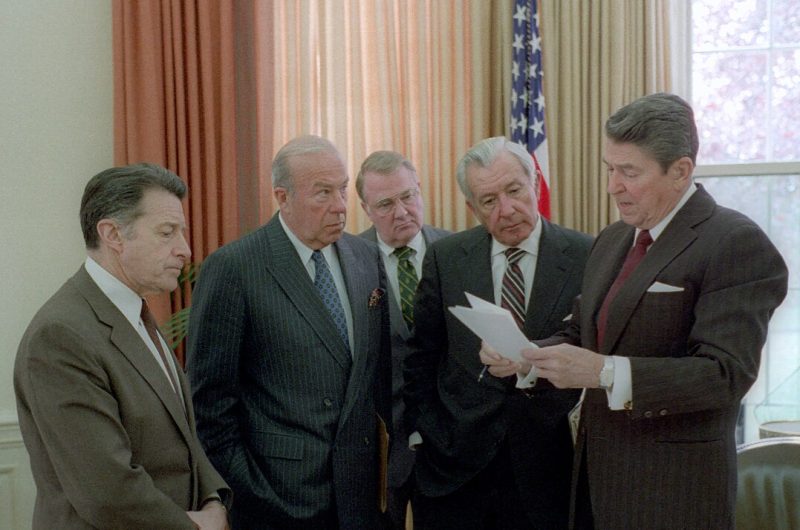

Great Article! Its interesting to see that they had to change the composition of the voters to get the thing passed. Kind of similar to what Trump wanted to do with the electors, Glad the plot worked here in Michigan!
Growing up in Ironwood, backing the Packers and enjoying Wisconsin’s 18 year-old beer drinking age, we always felt way more kinship to the cheeseheads than to the Southerners across the bridge.
But if we were ever taught why we were part of Michigan I was absent that day.
The historical marker outside the Washtenaw County Courthouse avoids this historical embarrassment by simply omitting the fact that there had been an earlier convention!
While “got the UP” is the universal shorthand for Michigan’s compensation for surrendering the Toledo Strip, Wikipedia’s entry on the Michigan Territory supports my recollection that what was gained was only the western part of the peninsula. It doesn’t specify where the dividing line had been, but I suspect it was drawn north from the southernmost point in Lake Michigan, since that was the point from which Ohio’s surveyors purported to have drawn the eastward line that (inaccurately) put the mouth of the Maumee in Ohio.
The dividing line had been a north-south line running from the northernmost point of Lake Michigan. There is a historical marker on the beach near Naubinway that notes the location.
Another fine piece of UP history Dan. Thanks
Would’ve preferred to be part of Wisconsin.
why?
An interesting follow up is that a boundary dispute between Michigan and Wisconsin as to the Western U.P. border along the Montreal and Menominee River was not resolved until 1935 after three trips to the United States Supreme Court. The issues were: which branch of the Montreal River, and what Islands in the Menominee River? The dispute extended out into Green Bay and along the Door Peninsula in Wisconsin. Wisconsin won the litigation and Michigan lost.
Judge Thomas L. Solka (Ret.)
I wonder what the 3 districts dividing the UP represent; 205, 219 & 261? I live in Escanaba, was this area originally intended to be part of Wisconsin?
Very interesting story! I love that we have the U.P. today.
The real loser in this story: future Wisconsin!
Anyone looked at how being part of michigan has impacted the UP (particularly the western part) in terms of economic development? Seems like the WI side of the border is quite a bit more lively. This was certainly exaggerated the past couple years when we visited Ironwood, which was a ghost town, but a few minutes away in Hurley it was incredibly vibrant and active, with people going out to eat and walking around the downtown area. But there might be something to it. Has rural western MI paid a price for being on one side of the border – not just during the pandemic but going back decades?